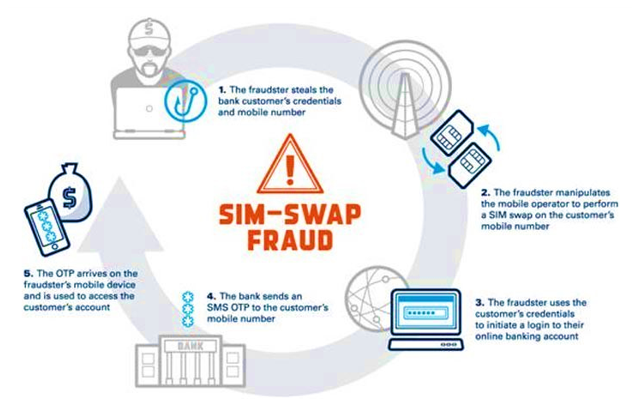
A SIM swap attack, also known as a SIM card swap fraud or SIM hijacking, occurs when an attacker convinces a mobile carrier to transfer a victim's phone number to a SIM card controlled by the attacker.
This can be a serious security breach, and the symptoms of a SIM swap attack can include:
Loss of Mobile Service: The most obvious symptom is that your mobile phone suddenly loses service, and you are unable to make calls or use data. This happens because your phone number has been transferred to the attacker's SIM card.
Unexpected Text Messages or Calls: You may receive text messages or calls from your mobile carrier, stating that your number has been transferred to a new SIM card. If you didn't initiate this change, it's a clear sign of a SIM swap attack.
Inability to Access Accounts: If the attacker gains control of your phone number, they may use it to access your online accounts (email, social media, banking, etc.) that rely on two-factor authentication (2FA) through SMS or phone calls.
Unusual Account Activity: You may notice unauthorized access, transactions, or changes on your online accounts. For example, unfamiliar login attempts, password resets, or financial transactions.
Missing or Altered Contacts: Attackers may attempt to cover their tracks by deleting or altering contact information in your phone, making it difficult for you to reach out for help.
Identity Theft or Fraud: In some cases, attackers use the stolen phone number to impersonate the victim and engage in identity theft or fraud activities.
Social Engineering Attempts: Attackers may contact your contacts or family members to further their scheme, seeking more personal information or trying to deceive them.
If you suspect you are a victim of a SIM swap attack or experience any of these symptoms, it's crucial to take immediate action. Contact your mobile carrier to report the issue, change your passwords for online accounts, and enable stronger forms of two-factor authentication, such as app-based or hardware tokens. It's also a good practice to regularly monitor your accounts for any unusual or unauthorized activities.